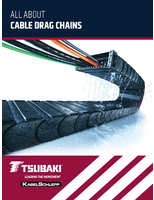TGA releases report on state of U.S. travel goods market.
Press Release Summary:
According to a report from the Travel Goods Association (TGA), continued growth in the use of travel goods in everyday life led to record sales during 2006. TGA estimates that U.S. consumers spent $20.7 billion on travel goods in 2006, fueled by consumer demand in all categories. Travel goods include products such as luggage, backpacks, travel/sports bags, business cases/computer bags, handbags, personal leather goods, and luggage locks.
Original Press Release:
U.S. Travel Goods Sales Hit Record In 2006
Travel Goods Association Releases Report on
State of the U.S. Travel Goods Market 1992-2006:
A Profile of the U.S. Travel Goods Market
Princeton, NJ -The continued growth in the use of travel goods in everyday life led to record travel goods sales during 2006, according to a new report from the Travel Goods Association (TGA). Travel goods are defined as luggage, backpacks, travel/sports bags, business cases/computer bags, handbags, personal leather goods and luggage locks. TGA estimates that U.S. consumers spent a record $20.7 billion on travel goods in 2006, fueled by burgeoning consumer demand in virtually all travel goods categories.
"There are two factors driving the growth in sales," explains Michele Marini Pittenger, TGA's president. "First, more people are traveling today, and second, travel goods are becoming a part of our everyday life. Totes and backpacks were previously used mainly in schools and airports; today they are more and more common in the workplace. Handbags and business cases traditionally held personal items and important papers, but now they must also accommodate cell phones, iPods, PDAs and laptops. And consumers want all of these products to be smaller, stylish and lightweight."
With more and more demands being placed on the travel goods they use, consumers are demanding new and better products - and the U.S. travel goods industry is delivering. "These changing demands mean consumers will no longer wait until their tote or briefcase wears out, but will instead buy the new backpack or briefcase to go with their new laptop or cell phone - translating into a surge in demand for these items," says Pittenger.
This growth, however, has curbed sales of more traditional travel goods such as luggage and handbags as people find alternatives that better suit their changing lifestyles.
Says Pittenger, "Because consumers now buy travel goods because they 'need' them, they are focusing on new, functional, innovative and stylish products rather than simply comparing costs. This should lead to stabilizing prices after years of deflation, and since it looks like the consumer's appetite for well-designed, original and fashionable travel goods shows no signs of abating, 2007 should be another great year for the industry."
Here's a quick look at how TGA estimates each of the major travel goods categories performed in 2006:
Luggage
The key phrase for U.S. luggage sales in 2006 is "quality over quantity." Luggage sales faced new pressures as consumers continued to utilize less traditional travel goods - like business cases/computer bags, travel/sports bags and backpacks - for their travels. While TGA estimates that the unit volume of luggage sold in the United States slipped from the record sales set in 2005, the average price of each piece of luggage sold in 2006 jumped 22.1% over the 2005 average price - showing that while consumers became more particular, they were willing to pay to get the exact piece of luggage they were looking for.
Backpacks
Backpacks are no longer restricted to school campuses and campgrounds but are now ubiquitous, being seen everywhere from airports to board rooms. Why? Because U.S. travel goods firms have successfully transformed backpacks from something that just carries your books or your camping gear into cutting-edge, versatile and multi-functional products that can cross over to every aspect of consumers' lives and meet their varying lifestyles. And consumers have responded. TGA estimates that unit volume sales surged 13.0% in 2006. Just as important, the average price of a backpack grew for the first time in years - registering a small, but significant, 2.3% increase.
Travel/Sports Bags
While this category remains dominated by "freebies," or promotional bags used by companies to give away to customers and at conferences and events, the growth in the use of multi-functional totes, duffels and other travel/sports bags for both travel and everyday use led to a TGA-estimated 5.7% growth in sales in 2006. The average price paid by consumers for those bags also grew, increasing 8.6% in 2006.
Business Cases/Computer Bags
With U.S. travel goods firms producing innovative products to match the changing lifestyles of consumers - providing versatile and fashionable business cases/computer bags for travel as well as for everyday use - TGA estimates that consumers pushed unit volume sales in this category up 9.9% in 2006. Consumers also were willing to pay more for these inventive and increasingly stylish products, pushing up the price for the average business case/computer bag by 12.4%.
Handbags
If you only looked at the TGA-estimated 9.7% fall in unit volume sales of handbags in 2006, you might think women's fascination with owning multiple handbags was waning. And although some handbag purchases may have migrated to the business cases/computer bags or travel/sports bags category, a quick look at the estimated average price women paid for handbags, which surged 15.8% in 2006, should make you think twice. It seems that women just don't want any handbag anymore, they want "the" handbag - and they are willing to pay for it.
Personal Leather Goods
In this category, it appears that U.S. travel goods firms are the victims of their own success. Having successfully incorporated pockets and/or holders for consumers' glasses, PDAs, cell phones, iPods and the many other goodies consumers use today into multi-functional business cases, computer bags, totes, backpacks and handbags, U.S. travel goods firms have essentially eliminated the need for the personal leather goods that used to hold and protect these items. Further, the continued growth of MP3 players and PDAs has also slowed the need for CD cases and day planners, two traditional personal leather goods categories. As a result of these changes, TGA estimates that sales of personal leather goods have started to decline from their record highs of a few years ago, with 2006 down 4.1% from 2005.
Luggage Locks
With the rule changes implemented in 2006 restricting what you could carry onto airplanes - from personal hygiene items to wrapped presents - consumers were forced to carry many of these items in their checked luggage. Growing concerns about the safety of that checked luggage (and the new items they contained) led consumers to buy 3.3% more luggage locks in 2006.
For more information, go to TGA's just released State of the U.S. Travel Goods Market 1992-2006 Report at travel-goods.org/press/release/tgamarket2006.pdf (PDF format) or contact TGA at 609-720-1200 to learn more about the latest trends in the U.S. travel goods market.




